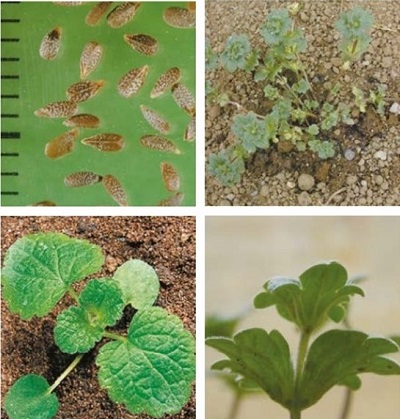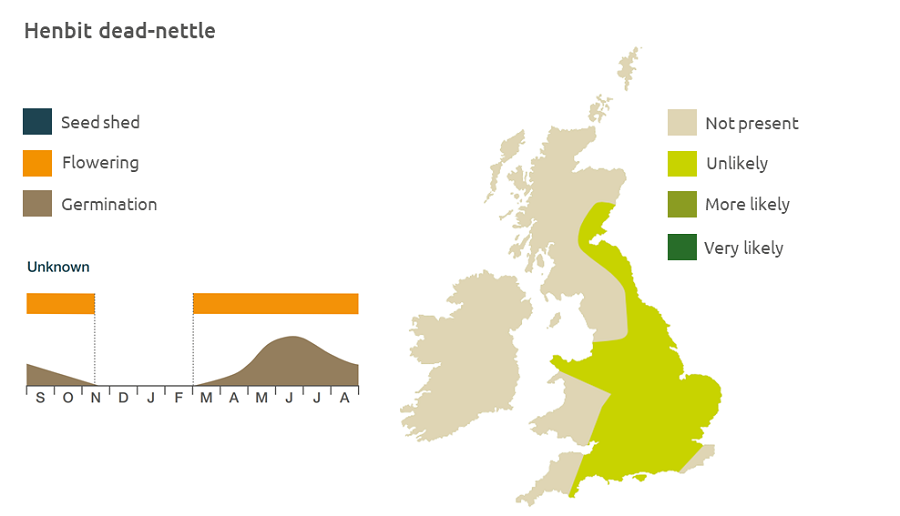- Home
- Knowledge library
- Distribution and biology of henbit dead-nettle in the UK
Distribution and biology of henbit dead-nettle in the UK
Henbit dead-nettle is a common broad-leaved weed on arable land. Find out how to identify and control it.
Overview
Henbit dead-nettle (Lamium amplexicaule) is common on arable land, where it is most often found in winter crops. Plants are self-fertile and in dull weather can fertilise themselves while in the bud. The seeds germinate in spring and summer and small plants can overwinter.
- It has value to biodiversity
Description
It is an annual bushy and branched dicotyledon, 25 cm tall. The pink flowers are less conspicuous than those of other dead-nettles.
Key features
Young plant: The first true leaves are rounded.
Plant: The leaves are rounded with wavy edges and the upper leaves appear to circle the stem.
Lookalikes
Henbit dead-nettle may be confused with red dead-nettle; the dead-nettles can be difficult to distinguish at the seedling and young plant stages. The first true leaves of henbit dead-nettle are paler than the other dead-nettles.

Location and life cycle

Geographic distribution
Henbit dead-nettle is common on arable and fallow land to the south east of Britain. It grows up to an altitude of 450 m.
Soil type
It prefers light dry humus and sandy loam soils which are nutrient rich.
Seed statistics
- Seed longevity: >5 years
- Seed weight: 0.5 mg
- Seeds/plant: 200
Management
It may be controlled by spring cropping.
For advice on herbicides, please speak with your agronomist or adviser.
When was this information last updated?
This page is based on content from the encyclopaedia of arable weeds publication. Since it was first released in 2008, the publication has been redesigned several times but not revised. However, it remains a good foundation for general information on the distribution and biology of weeds.

